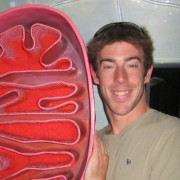Author Interviews, Fertility, OBGYNE / 10.09.2015
Folic Acid and B12 May Improve Assisted Reproductive Technology Results
 MedicalResearch.com Interview with:
Audrey J. Gaskins, Sc.D. Postdoctoral Fellow
Department of Nutrition
Harvard T.H. Chan School of Public Health
Boston, MA 02115
Medical Research: What is the background for this study? What are the main findings?
Dr. Gaskins: Infertility, defined as the inability to conceive after 12 months of unprotected intercourse, is a common reproductive disorder affecting ~15% of couples who attempt to become pregnant. Assisted reproductive technologies (ART), which include in vitro fertilization (IVF) and intra-cytoplasmic sperm injection (ICSI), have become the main treatment modalities for couples facing infertility. Pre-conceptional folate and vitamin B12 have been linked to many beneficial early pregnancy outcomes among couples undergoing assisted reproductive technologies treatment in Europe but mixed results have been found in regards to clinical pregnancy and live birth rates. Therefore, we sought to investigate whether higher levels of serum folate and vitamin B12 could increase reproductive success in a cohort of women undergoing assisted reproductive technologies at an academic medial center in the United States.
We found that high concentrations of folate and vitamin B12 in serum are associated with increased chance of live birth following assisted reproduction. Moreover, women with higher concentrations of both serum folate and vitamin B12 had the greatest likelihood of reproductive success. Analysis of intermediate endpoints suggests that folate and vitamin B12 may exert their favorable effects on pregnancy maintenance following implantation.
(more…)
MedicalResearch.com Interview with:
Audrey J. Gaskins, Sc.D. Postdoctoral Fellow
Department of Nutrition
Harvard T.H. Chan School of Public Health
Boston, MA 02115
Medical Research: What is the background for this study? What are the main findings?
Dr. Gaskins: Infertility, defined as the inability to conceive after 12 months of unprotected intercourse, is a common reproductive disorder affecting ~15% of couples who attempt to become pregnant. Assisted reproductive technologies (ART), which include in vitro fertilization (IVF) and intra-cytoplasmic sperm injection (ICSI), have become the main treatment modalities for couples facing infertility. Pre-conceptional folate and vitamin B12 have been linked to many beneficial early pregnancy outcomes among couples undergoing assisted reproductive technologies treatment in Europe but mixed results have been found in regards to clinical pregnancy and live birth rates. Therefore, we sought to investigate whether higher levels of serum folate and vitamin B12 could increase reproductive success in a cohort of women undergoing assisted reproductive technologies at an academic medial center in the United States.
We found that high concentrations of folate and vitamin B12 in serum are associated with increased chance of live birth following assisted reproduction. Moreover, women with higher concentrations of both serum folate and vitamin B12 had the greatest likelihood of reproductive success. Analysis of intermediate endpoints suggests that folate and vitamin B12 may exert their favorable effects on pregnancy maintenance following implantation.
(more…)























